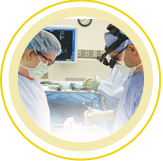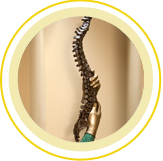Known as a curvature of the spine to the left or right side, scoliosis is the most common spinal deformity of young children. In fact, nearly 3 million new cases of the condition are diagnosed in the United States every year.
So, as a parent, how can you know if your child is suffering from scoliosis and if you should seek treatment?
Be Proactive with Visits to Spine & Scoliosis Specialists
As with most things, early diagnosis is one of the keys to scoliosis management, especially in young children. As children grow, there will be changes in their spine. If scoliosis is not diagnosed early and goes unnoticed, the issue can become much worse. Having routine physicals is a step in the right direction, but keeping a watchful eye on your little one as they grow and making appointments with your doctor to discuss anything out of the ordinary is most important. Should you ever see a change in your child’s spine structure, contact your doctor as soon as possible.

Family History is A Risk Factor
While this is certainly not the only reason for scoliosis, it is a more prominent recurring factor in children that are diagnosed. Scoliosis can often go unnoticed, even in adults, which means that there is a high chance you may be unaware of anyone in your family ever being diagnosed. For this reason, many parents answer “no” when asked if there’s a family history of scoliosis. Make sure to check your family tree in detail if you spot signs of scoliosis in your child.
Don’t Just Search For a Cause
If you feel your child is suffering from scoliosis, or you have received a diagnosis, don’t just begin searching for a cause. Remember, your child did not get scoliosis because of you, and there’s not much you could have done to prevent it. There’s often no known cause of scoliosis in young children, although some try to point to heavy backpacks as a culprit, so rest easy knowing that now it’s just a matter of being proactive with your treatment options.
Pay Close Attention To Symptoms
The easiest thing to do is to be on the lookout for specific symptoms of scoliosis. These symptoms can include:
- Differences in the heights of shoulders.
- Off-center head.
- Difference in hip height.
- Curved neck.
- Differences in the way a child’s arms hang.
Even if these things are part of an injury and not scoliosis, it’s important to consult with your doctor as soon as possible.
Seek Treatment in Greensboro and High Point, NC
If you are concerned that your child is experiencing symptoms of scoliosis, or you would like to discuss more about what to look for, contact Spine & Scoliosis Specialists today to set up an appointment.



